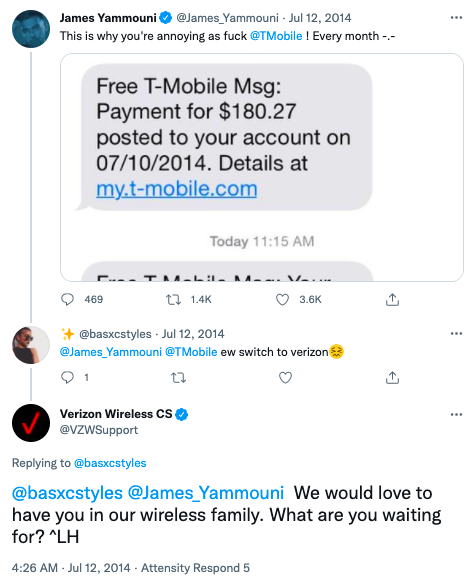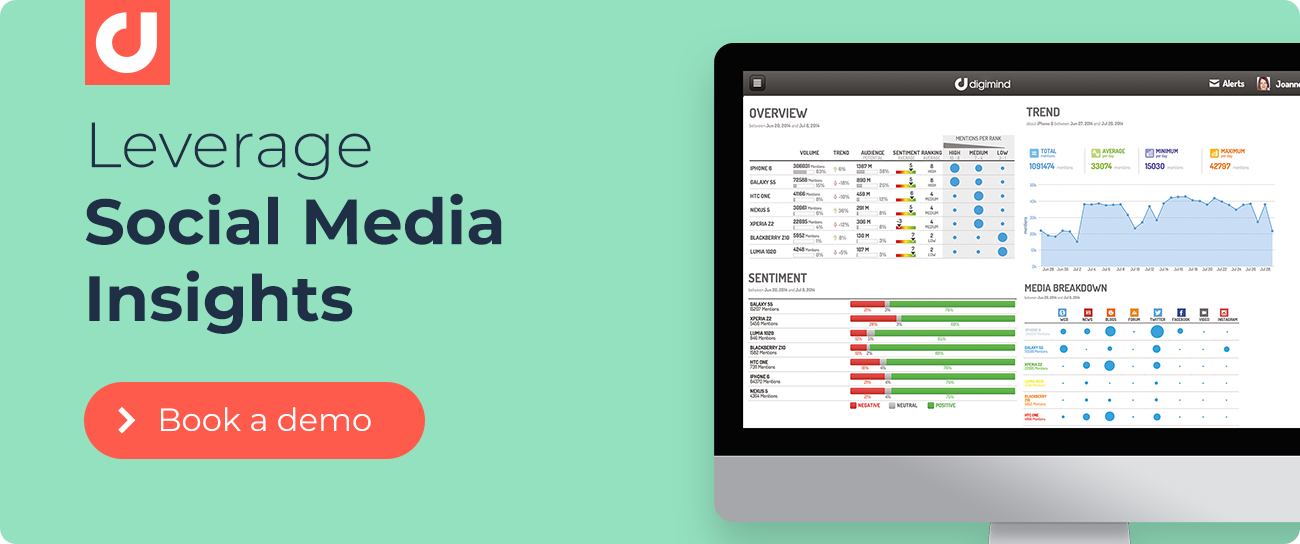7 Ways to Use Social Listening for Customer Service
Responding to customers on social media can increase advocacy by 25% and decrease churn rate by 15%.
Over the past decade, rapid growth in technology, supply chain, and logistics culminated with everyone buying things online. Fast forward to the pandemic in 2021, and this trend has glaringly become more apparent to how consumers navigate shopping. These advancements broke the geographical barriers and allowed consumers to shop and gather information from a global marketplace.
An average person spends at least two hours on social media per day, scrolling feed after feed for a dopamine hit and sharing their life experiences with fans, friends, or families. It is now an unspoken expectation among consumers for businesses to utilize social media as a customer service channel.
Customer service is no longer confined to a telephone or email as 50% of customers say they would share their bad or good service experiences through social media. While businesses could engage customers globally through social media, it is also a challenge to look out for unsatisfied experiences proactively.
96% of social media users who follow brands also interact with them on social platforms, which means that customers are using social media to publicly reach out to your business with reviews, feedback, questions, or concerns. There is a considerable impact on the profits of businesses as Qualtrics reported 93% of your customer purchase decisions are influenced by these reviews.
Here are seven ways to use social listening for customer service to deliver superior, customer-centric experiences for your brand to have a competitive advantage and impact the bottom line.
1. Start With the Social Network Where Your Customers Gather
Facebook, Instagram, YouTube, Twitter, TikTok, and LinkedIn demographics by age group (Statista, Datareportal).
The social media user demographics chart above could help you get off to a good start, but it is recommended that you consider current social media activities to observe which social media channels your audiences are most active on.
For example, your customer demographics are on Instagram. However, because you are receiving higher interactions and customer service reviews on your Facebook page, focusing your operations around Facebook may help you win more opportunities in retaining customer loyalty.
Good customer service or service recovery would most likely happen when customers receive real-time or timely replies from a business. In other words, once they post or tag a brand with their feedback or reviews on social media, they expect the brand to be accountable and solve it almost immediately.
2. Use a Social Listening Tool for Complete Coverage
A brand would receive notification on the respective social media platform that a customer tagged them in. But what happens if the customer does not tag your social account? You might miss out on customers who are genuinely waiting for you to reply even though they did not tag you in the first place. This honest mistake might cost you a customer.
Dear Twitter Support.....
— James Gingerich, @Expeflow #WorkEasier #RPA (@jamesvgingerich) September 27, 2019
Why are the number of people I am following about 32,911 lower than the actual number of people I was following as of yesterday? This is causing people who follow me to stop following me which is costing me hours and hours of work. Any help? pic.twitter.com/m2qST2KCrz
Screenshot of an untagged customer complaint (Twitter) from Twitter user @jamesvgingerich
Ever heard of “never placing all your eggs in one basket”? It may be worth your effort to invest in a social listening tool to monitor other web and social channels outside of your owned platforms. Doing so can help your brand stay ahead of any potential customer complaints, track hot spots of relevant topics, or simply inform business strategies around any underlying weaknesses.
3. Expand Your Social Listening to Forums
Online forums are a community for crowdsourcing solutions on anything under the sun. Like Google, you could search for topics and find related threads, start a thread or post your comment on other threads.
iPhone 13 forum discussion on Reddit
For businesses, online communities like Reddit or Quora are a great place to look at in-depth discussions of your products or services and identify authentic customer pain points. If Apple replied to the thread and assisted the customer, it would be a significant service recovery. In addition, leaving a social media thread open could serve as a guide for other customers experiencing the same problem.
4. Respond to Your Customer Complaints Quickly and Take It “Offline”
Where do customers usually air their complaints? At least one in two customers would air it on social media and that figure would most likely increase in favor of social media in the future. The speed of your response has an indirect impact on your business profits. HBR shared that for airlines, responding quickly to customer complaints makes people willing to pay more in the future.
A study on how much customers will pay more in the future based on response time (HBR).
Three steps on dealing with a customer complaint on social media:
-
-
Acknowledge the issue
-
Apologize because customers who complain are more willing to forgive a company that offers an apology than a compensation
-
Request to clarify the matter with the customer privately
-
5. Listen to Your Competitors’ Customer Service Issues
Brands should embrace the interactiveness of social media and respond tactfully to all posts. Customers who tag a brand on social media would expect a quick reply, particularly if it implies a bad experience. Include your competitor in your social listening strategy and scope unexpected opportunities waiting at the door.
Screenshot of negative customer experience (T-Mobile) from Twitter user @James_Yammouni
Your competitors are waiting to provide your customers with good customer service in public, while your other customers are watching closely on social media to evaluate you. Zendesk reported that 40% of people begin purchasing from a competitive brand because of its differentiating reputation for great customer service.
6. Celebrate Good Customer Service
It is not all gloom and doom for customer service on social media. Customers would also share their happy experience or how you provided excellent service recovery on their not-so-good experience.
Screenshot of a positive customer experience (Harvey Norman) from Facebook user Shahrizal Salleh
The positive social media screenshot above is social proof for customers in the consideration stage of their buying journey. User-generated content is considered a trusted source of review that brands should actively promote.
Not all positive posts would tag your brand or go viral on social media. You could overcome this challenge by using social listening to monitor all social media channels to avoid missing out on customer engagement.
Three steps on dealing with positive customer feedback on social media:
-
- Thank the customer on the social media post
- Privately ask the customer for permission to share this positive experience and credit the staff who made it happen
- Promote it on your social media channels
7. Look Out for Opportunities to Surprise and Delight Your Customers
Occasionally, you would get brand mentions from people that don’t already follow you, or else they would have most likely tagged or messaged you directly. These fans weren’t expecting a response back, so when you take the time to engage with them, it creates an atmosphere of surprise and delight.
Screenshot of positive customer experience (Delta Hotels) from Twitter user @MikeMcCready
The customer above tweeted about his Delta Hotels room with an ugly view without tagging the hotel. Because of social media monitoring, Delta Hotels responded within an hour and moved him to a better room with complimentary dessert and a handwritten card.
Screenshot of a positive customer experience (Toyota) from Twitter user @VincentOrleck
There are also occasions when the experience has nothing to do with your brand directly, but it is still an opportunity to surprise and reward your customers. Toyota saw that its truck was used to save lives and decided to give a brand new one to the customer.
Add Social Listening to Your Customer Service Stack for Brand and Revenue Growth
Social listening tools, like Digimind Social, allows you to identify online conversations and spot potential customer service opportunities. This can help your team save time and improve efficiency while putting the needs of your customers first. In a competitive landscape, every customer experience matters. By exceeding the expectations of your customers, you could meet the demands of your bottom line.
Book a complimentary demo with us and experience social listening in action.
.png?width=100&name=logo%20(1).png)




